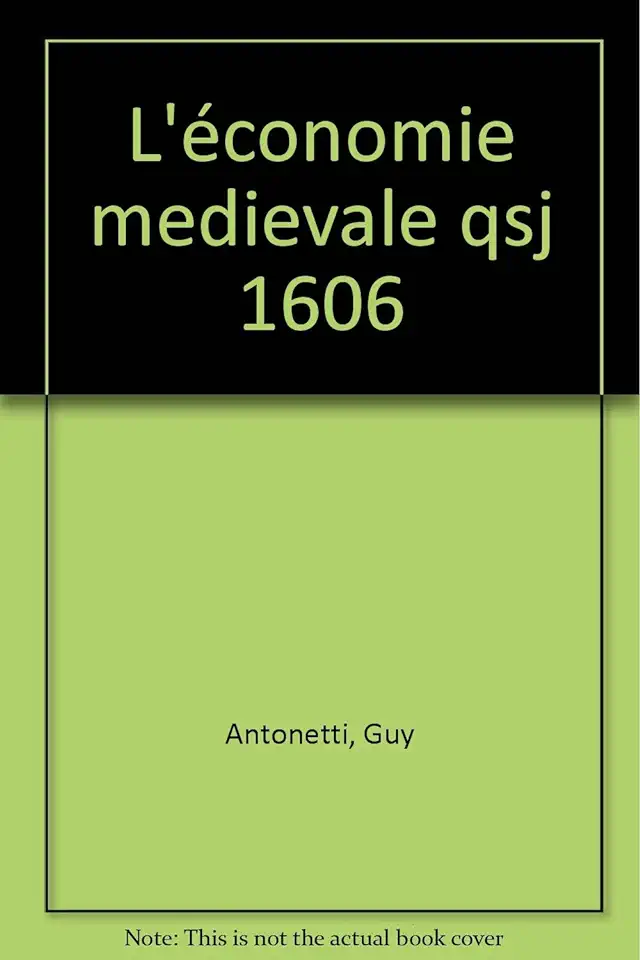
The Medieval Economy - Guy Antonetti
The Medieval Economy: A Comprehensive Exploration of Europe's Economic Transformation
Introduction: Unveiling the Dynamics of Medieval Economic Evolution
Guy Antonetti's groundbreaking work, "The Medieval Economy," embarks on an enthralling journey through the intricate tapestry of Europe's economic transformation during the Middle Ages. This comprehensive and meticulously researched volume delves into the profound shifts that reshaped the continent's economic landscape, shedding light on the factors that propelled Europe from a fragmented agrarian society to a vibrant and interconnected economic powerhouse.
Chapter 1: The Foundations of Medieval Economic Growth
Antonetti begins by establishing the foundations of medieval economic growth, meticulously examining the agricultural revolution that transformed Europe's rural landscape. He vividly portrays the introduction of new farming techniques, the expansion of arable land, and the rise of manorialism, all of which laid the groundwork for increased agricultural productivity and population growth.
Chapter 2: The Rise of Trade and Urbanization
As Europe's population swelled, so did the demand for goods and services, fueling the growth of trade and the emergence of bustling urban centers. Antonetti vividly depicts the vibrant market towns and cities that sprang up along trade routes, becoming hubs of commerce and cultural exchange. He explores the rise of merchant guilds, the development of financial instruments, and the emergence of a sophisticated credit system that facilitated trade and investment.
Chapter 3: Technological Innovations and Industrialization
The medieval period witnessed a remarkable surge in technological innovations that revolutionized various industries. Antonetti meticulously documents these advancements, from the invention of the watermill and the heavy plow to the widespread adoption of windmills and the introduction of new mining techniques. These innovations not only enhanced productivity but also laid the groundwork for the Industrial Revolution that would transform Europe in the centuries to come.
Chapter 4: The Role of the Church and Religious Institutions
Antonetti delves into the profound influence of the Church and religious institutions on the medieval economy. He examines the role of monasteries as centers of learning, agricultural experimentation, and economic management. He also explores the impact of religious beliefs and values on economic behavior, highlighting the significance of charity, usury, and the concept of the "just price."
Chapter 5: Trade and Cultural Exchange with the East
The medieval period witnessed a remarkable expansion of trade and cultural exchange with the East. Antonetti vividly portrays the bustling trade routes that connected Europe with the Byzantine Empire, the Islamic world, and even China. He explores the exchange of goods, ideas, and technologies that enriched European society and stimulated economic growth.
Chapter 6: The Impact of the Crusades
The Crusades, while primarily religious in nature, had a profound impact on the medieval economy. Antonetti examines the economic consequences of these holy wars, including the disruption of trade routes, the influx of wealth into Europe, and the rise of new commercial opportunities. He also explores the cultural and technological exchanges that occurred as a result of the Crusades.
Chapter 7: The Late Middle Ages and the Black Death
The later Middle Ages witnessed a period of economic prosperity and cultural flourishing, but it was also marked by challenges and setbacks. Antonetti analyzes the impact of the Black Death, which decimated Europe's population and caused widespread economic disruption. He also examines the economic consequences of the Hundred Years' War and the Great Schism, which further strained Europe's resources.
Conclusion: The Legacy of the Medieval Economy
In his concluding chapter, Antonetti reflects on the enduring legacy of the medieval economy. He argues that the economic foundations laid during this period paved the way for the rise of capitalism and the modern world economy. He emphasizes the importance of understanding the medieval economy not only as a historical subject but also as a source of valuable insights for contemporary economic thought and policy.
Why You Should Read "The Medieval Economy"
"The Medieval Economy" is a must-read for anyone interested in understanding the roots of modern economic systems. Guy Antonetti's masterful work provides a comprehensive and engaging exploration of Europe's economic transformation during the Middle Ages. Through meticulous research and vivid storytelling, he brings to life the dynamic forces that shaped the continent's economic trajectory and laid the groundwork for the modern world.
Whether you are a scholar, a student, or simply a curious reader, "The Medieval Economy" offers a wealth of knowledge and insights that will enrich your understanding of economic history and its enduring impact on our world today.
Enjoyed the summary? Discover all the details and take your reading to the next level — [click here to view the book on Amazon!]